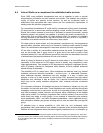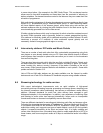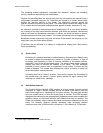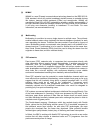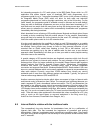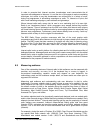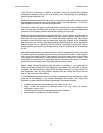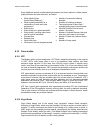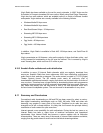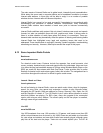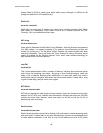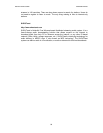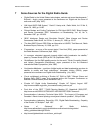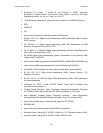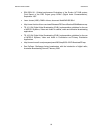DIGITAL RADIO GUIDE INTERNET RADIO
86
Some additional specific media-related parameters are those related to media players,
quality delivered and user behaviour, as follows:
• Which Media Player
(Audio/Video/Graphics)?
• Which speed (bandwidth) for a
combination of audio and video
programme?
• Start-up time
• Audio quality for a given bandwidth
• Video quality, including video frame
rate for a given bandwidth
• Connect time
• Redirect time
• Initial buffer time
• Recovered, lost and dropped packets
• Number of successful buffering
attempts
• Duration of buffering (average)
• Total playing time for each user /
average playing time for each stream
• Hits and Duration Chart for each
stream / all streams
• Number of finished Streams (who and
how many have seen it to the end)
• Number of linear Hits (without Stop or
Pause)
• Number of loops made
6.10 Case studies
6.10.1 VRT
The Belgian public service broadcaster, VRT Radio, started broadcasting on the Internet
in 1997. VRT's radio player offers a mix of six traditional radio stations and three
exclusive digital services. Of the more than 300,000 unique visitors it attracts every
month, more than 80 per cent listen to live streams, while 10 to 15 per cent listen to both
live and on-demand programmes. VRT has seen its bandwidth consumption double over
the past year and currently uses up to 45 terabytes of bandwidth a month.
VRT automatically records and uploads all of its on-demand content. News bulletins are
available on-demand roughly three minutes after the live broadcast is over. Programmes
more than 60 minutes long are available about 20 minutes after the broadcast. VRT's
radio player works on both Windows and Mac platforms and is a browser-embedded
application that requires Flash 7 and Windows Media Player or QuickTime Player. VRT
streams in two formats: MP3, at 6, 32 and 96 kbps; and WMA, at 20 and 64 kbps.
VRT has a global rights agreement with organizations including IFPI (the International
Federation of the Phonographic Industry) covering both live and on-demand streaming.
This is quite common in Europe and contrasts with the situation in North America, where
broadcasters usually pay a fee per listener.
6.10.2 Virgin Radio
Virgin Radio boasts one of the world's most successful Internet Radio networks.
According to Virgin Radio, which uses the Limelight LUX tool to monitor its online traffic, it
reaches 1.1 million consumers who listen for an average of 4.4 million hours a month. In
2005, Virgin won two prestigious online awards, scooping both the Webby Award and the
People's Voice Webby Award for radio. (The Webby Awards is the leading international
prize honouring excellence in Web design, creativity, usability and functionality.) In 2006,
Virgin became the first UK station to make a daily podcast.



